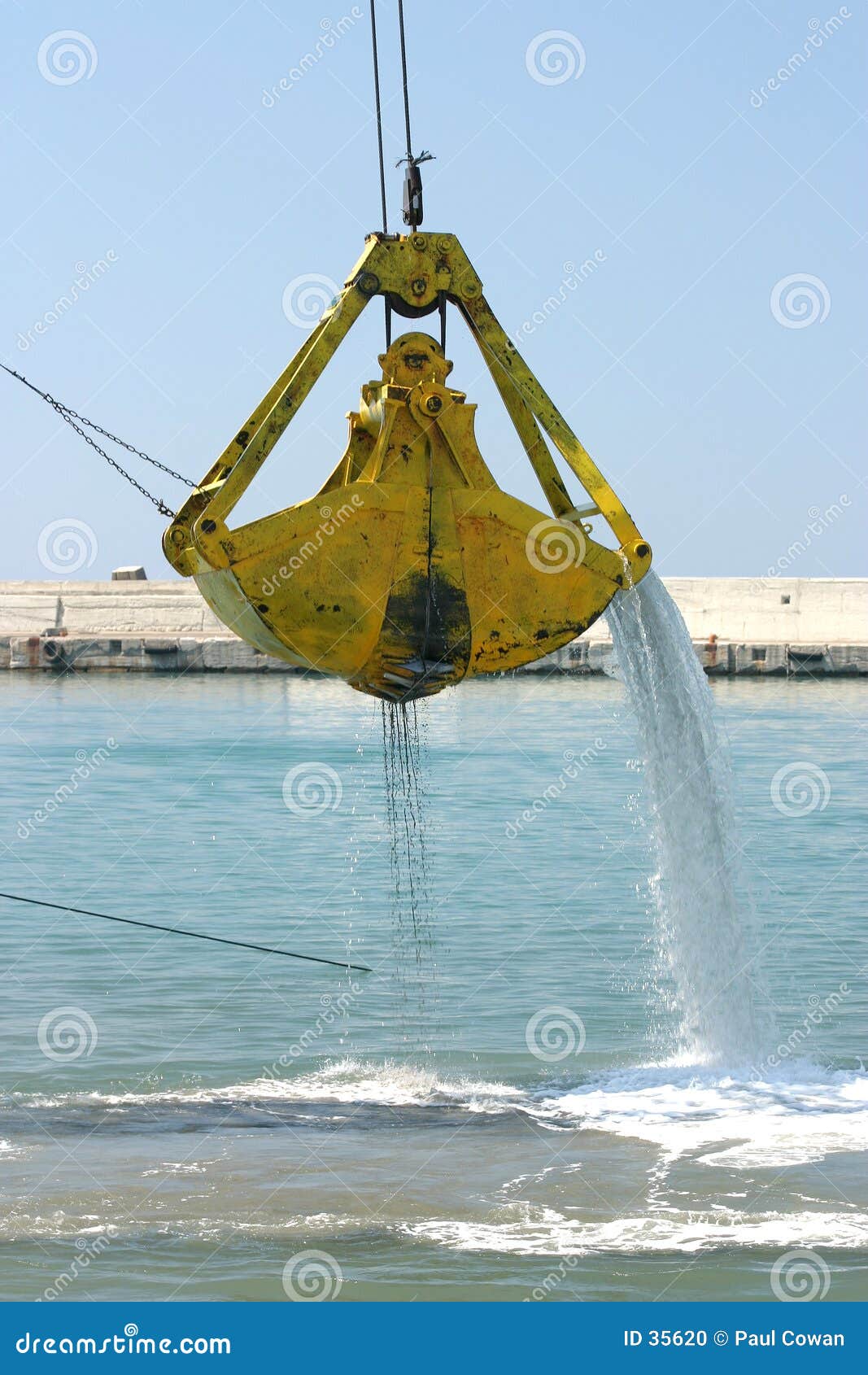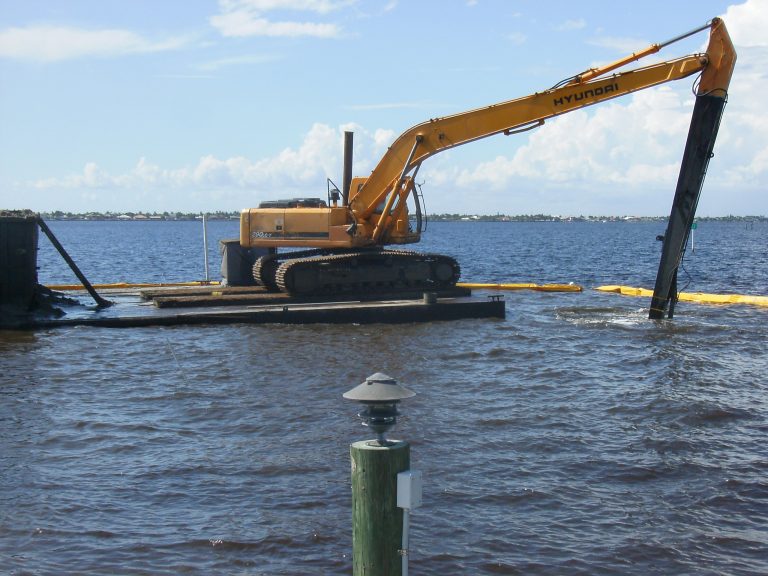


The cost of disposal of dredged sediments can often be higher than the cost of dredging if the materials need to be re-handled, trucked, or sent to a landfill for disposal. This is generally the toughest question that needs to be answered before a dredging project can begin - especially in the private sector. Hoppers are an example of ocean-going dredging vessels. Generally for mechanical dredging, we use a clamshell dredge and environmental buckets. Some examples of hydraulic dredges include those with cutter suction, rotary cutter heads, auger style heads, those with submersible pump attachments for excavators, and all-hydraulic suction dredges. It is then transported to a disposal site or placed in a CDF, a confined disposal facility. With mechanical dredging work, large cranes or excavators on a barge physically reach down, remove material, and place it into a material barge. Hydraulic dredging uses a larger cutter head attached to a pump that slurries up sand and water, sucks it up, and pumps it upwards of miles away to a disposal area. There are two common types of dredging used in this case: mechanical and hydraulic. In the private sector, maintenance dredging revolves around maintaining adequate draft in marinas and other places that experience high boat traffic, as well as for large commercial docks. The US Army Corps of Engineers (USACE) is responsible for this type of maintenance in federal navigation channels. Because water is always moving and naturally carrying materials that settle and need to be dredged, maintenance dredging is a constant, cyclical process of upkeep. Maintenance dredging is predominantly used as a means of maintaining required depths for boats and ships to safely traverse navigation channels. What is the purpose of maintenance dredging?


 0 kommentar(er)
0 kommentar(er)
